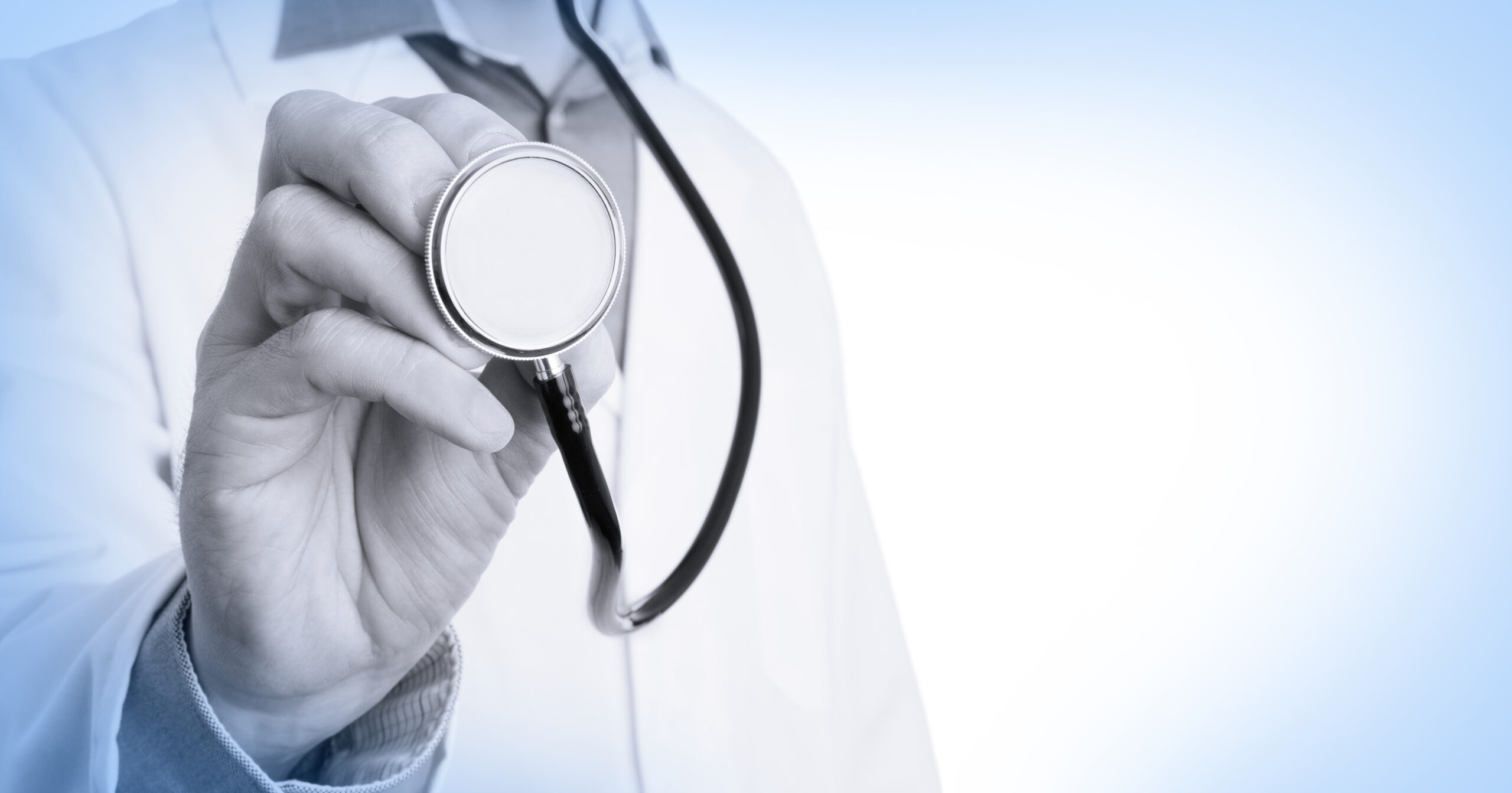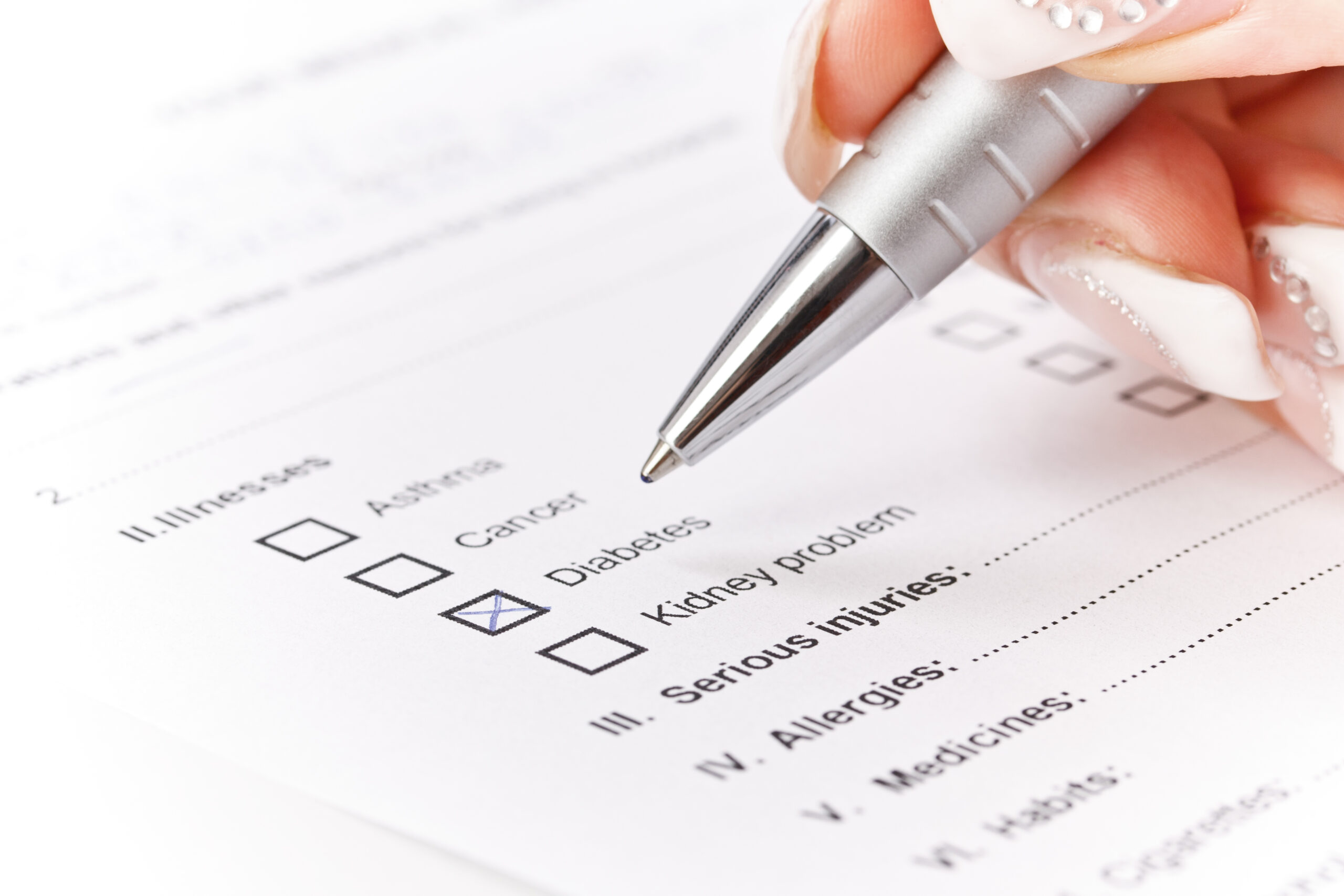A health risk assessment (HRA) is a tool that helps individuals identify and understand their health risks. It is a screening questionnaire that evaluates lifestyle factors and health risks of an individual. The results of the assessment can provide valuable insights into an individual’s health status and can help them make informed decisions about their health.
HRAs can be used for different purposes, including identifying health risks, monitoring health status over time, and developing personalized health plans. They can be conducted online, in-person, or over the phone. The assessment typically includes questions about an individual’s lifestyle habits, such as diet, exercise, and smoking, as well as questions about their medical history, family history, and current health status.
Overall, HRAs are an important tool for individuals to better understand their health risks and make informed decisions about their health. By identifying potential health risks early on, individuals can take proactive steps to prevent or manage chronic conditions, leading to a healthier and happier life.
Understanding Health Risk Assessment Tools
A health risk assessment (HRA) is a screening tool that evaluates an individual’s lifestyle factors and health risks. It is often the first component of a wellness program to be introduced. HRAs can be used for different purposes, such as identifying and understanding health risks, monitoring health status over time, and providing personalized feedback.
HRAs typically involve a questionnaire that gathers information about an individual’s health history, lifestyle behaviors, and family medical history. The questionnaire may cover topics such as diet, exercise, smoking, alcohol consumption, stress levels, and mental health. The results of the questionnaire are used to identify areas of concern and to provide personalized feedback on how to reduce health risks.
There are many types of HRAs available, and they can vary in terms of the questions asked, the scoring system used, and the feedback provided. Some HRAs are designed for specific populations, such as employees or patients with chronic conditions. Others are more general and can be used by anyone.
One of the benefits of HRAs is that they can help individuals become more aware of their health risks and motivate them to make positive changes. For example, an HRA may identify that an individual is at risk for developing type 2 diabetes due to their weight, diet, and family history. This information can motivate the individual to make changes to their diet and exercise habits to reduce their risk.
However, it’s important to note that HRAs are not a substitute for medical advice or a diagnosis. They are simply a screening tool that can help individuals become more aware of their health risks and provide guidance on how to reduce those risks.
In summary, HRAs are a valuable tool for identifying and understanding health risks. They involve a questionnaire that gathers information about an individual’s health history, lifestyle behaviors, and family medical history. HRAs can help individuals become more aware of their health risks and motivate them to make positive changes. However, they are not a substitute for medical advice or a diagnosis.
Key Components of Health Risk Assessment Tools
Health Risk Assessment (HRA) tools are used to identify potential health risks and provide personalized feedback to individuals to help them make informed decisions about their health. These tools typically consist of a questionnaire, an assessment of health status, and personalized feedback about actions that can be taken to reduce risks, maintain health, and prevent disease.
Assessment of Personal and Lifestyle Factors
One of the key components of an HRA tool is the assessment of personal and lifestyle factors. This includes questions related to age, gender, weight, exercise, nutrition, obesity, lifestyle habits, and lifestyle behaviors. These factors can help identify potential health risks and provide personalized recommendations for improving overall health.
Medical History and Biometric Data
Another important component of an HRA tool is the assessment of medical history and biometric data. This includes questions related to tobacco use, emotional health, and biometric data such as blood pressure, cholesterol levels, and glucose levels. This information can help identify potential health risks and provide personalized recommendations for managing these risks.
Risk Identification and Management
The final component of an HRA tool is the identification and management of health risks. This includes hazard identification, risk management, and risk factors. HRA tools can help identify potential risks and provide personalized recommendations for managing these risks. This may include lifestyle choices such as physical activity, nutrition, and stress management, as well as recommendations for medical care and follow-up.
Overall, HRA tools are an important tool for identifying potential health risks and providing personalized recommendations for improving overall health. By assessing personal and lifestyle factors, medical history, and biometric data, and identifying and managing health risks, these tools can help individuals make informed decisions about their health and reduce their risk of developing chronic diseases.
Role of Health Risk Assessment Tools in Healthcare
Health risk assessment (HRA) tools are an essential component of modern healthcare. They are used to identify potential health risks in patients, and to develop appropriate interventions to mitigate those risks. HRAs can be used in a variety of healthcare settings, including primary care, Medicare annual wellness visits, and population health management.
In Primary Care
In primary care, HRAs are used to identify potential health risks in individual patients. Physicians and healthcare providers use HRAs to gather information about a patient’s health history, lifestyle, and family history. This information is then used to identify potential health risks, such as high blood pressure, high cholesterol, or diabetes. Once potential risks have been identified, physicians and healthcare providers can develop appropriate interventions to mitigate those risks. This might include lifestyle changes, such as diet and exercise, or medication.
In Medicare Annual Wellness Visits
In Medicare annual wellness visits, HRAs are used to identify potential health risks in Medicare beneficiaries. Medicare annual wellness visits are designed to help beneficiaries stay healthy by identifying potential health risks and developing appropriate interventions to mitigate those risks. During a Medicare annual wellness visit, healthcare providers use HRAs to gather information about a beneficiary’s health history, lifestyle, and family history. This information is then used to identify potential health risks, such as falls, depression, or cognitive impairment. Once potential risks have been identified, healthcare providers can develop appropriate interventions to mitigate those risks.
In Population Health Management
In population health management, HRAs are used to identify potential health risks in large populations. Population health management is a healthcare approach that focuses on improving the health outcomes of entire populations, rather than just individual patients. HRAs can be used to gather information about the health risks of a population, such as the prevalence of chronic diseases or the incidence of certain health behaviors. This information can then be used to develop appropriate interventions to mitigate those risks. For example, a population health management program might use HRAs to identify a high prevalence of smoking in a particular population. The program could then develop a smoking cessation program to help reduce the prevalence of smoking in that population.
In conclusion, HRAs are an essential component of modern healthcare. They are used to identify potential health risks in patients, and to develop appropriate interventions to mitigate those risks. HRAs can be used in a variety of healthcare settings, including primary care, Medicare annual wellness visits, and population health management. By using HRAs, healthcare providers can help their patients stay healthy and reduce the overall burden of disease in their communities.
Utilization of Health Risk Assessment Tools in Workplace
Health risk assessment tools are becoming increasingly popular in the workplace. Employers are recognizing the importance of promoting employee health and well-being, not only for the benefit of their workers but also for the productivity and success of their business.
By utilizing health risk assessment tools, employers can gain valuable insight into the health status and risks of their employees. This information can be used to identify areas where interventions are needed, such as implementing wellness programs or improving the work environment to reduce stress.
The use of health risk assessment tools can also help to create a culture of health in the workplace. By encouraging employees to take an active role in their health, employers can promote a sense of responsibility and ownership over their well-being. This can lead to increased job satisfaction and engagement, as well as improved health outcomes.
One example of a health risk assessment tool that is commonly used in the workplace is the CDC’s Worksite Health ScoreCard. This tool assesses employee perceptions of the work environment, working conditions, and the attitudes of supervisors and coworkers that support a healthy worksite culture. The results can be used to identify areas for improvement and to track progress over time.
Overall, the utilization of health risk assessment tools in the workplace can have a positive impact on both employees and employers. By promoting a culture of health and wellness, employers can create a more productive and engaged workforce while also improving the health and well-being of their employees.
Standards and Policies Governing Health Risk Assessments
Health Risk Assessments (HRAs) are an essential tool for identifying potential health risks and providing personalized wellness recommendations. To ensure the accuracy and effectiveness of HRAs, various standards and policies govern their development and implementation.
One of the most prominent organizations responsible for setting HRA standards is the National Committee for Quality Assurance (NCQA). The NCQA provides accreditation and certification for healthcare organizations, including those that offer HRAs. NCQA-certified HRAs must meet specific requirements, such as identifying chronic diseases, injury risks, modifiable risk factors, and urgent health needs of an individual.
In addition to NCQA, various federal and state policies govern the use of HRAs. For example, the Affordable Care Act (ACA) requires health insurers to offer HRAs to their customers. The ACA also mandates that HRAs must be evidence-based, meaning they must be based on scientific research and proven to be effective in promoting health and preventing disease.
Other policies that may impact HRAs include the Health Insurance Portability and Accountability Act (HIPAA), which governs the privacy and security of patient health information, and the Americans with Disabilities Act (ADA), which prohibits discrimination based on disability and may impact the questions asked in an HRA.
Overall, adherence to these standards and policies ensures that HRAs are accurate, effective, and protect patient privacy and rights.
Technology and Health Risk Assessments
Technology has revolutionized the way we approach health risk assessments (HRAs). With the increasing use of smartphones, tablets, and other mobile devices, HRAs can now be easily accessed and completed by individuals from the comfort of their own homes.
Mobile HRAs allow individuals to complete the assessment on their own time, making it more convenient and accessible. The use of technology also allows for real-time feedback, which can be especially helpful for individuals who are looking to make positive lifestyle changes.
One example of a technology-based HRA is the use of a smartphone app that tracks an individual’s daily physical activity and provides feedback on their progress. This type of HRA can be especially effective for individuals who are looking to increase their physical activity levels and improve their overall health.
Another benefit of technology-based HRAs is the ability to collect data in real-time. This data can be used to identify trends and patterns in an individual’s health, which can be used to inform future interventions and treatments.
Overall, the use of technology in HRAs has made it easier for individuals to access and complete assessments, while also providing valuable feedback and data to inform future interventions and treatments.
Potential Health Risks Identified by Assessments
A health risk assessment tool is a screening tool that helps individuals identify and understand their health risks. By answering questions about their lifestyle, medical history, and demographic characteristics, individuals can receive personalized feedback on their potential health risks. Here are some of the potential health risks that can be identified by health risk assessments:
High Blood Pressure
High blood pressure, or hypertension, is a common health condition that can increase the risk of heart disease, stroke, and other health problems. Health risk assessments can identify individuals who are at risk of developing high blood pressure and provide recommendations for lifestyle changes or medical interventions to help manage their blood pressure.
High Cholesterol
High cholesterol levels can also increase the risk of heart disease and stroke. Health risk assessments can identify individuals with high cholesterol levels and provide recommendations for lifestyle changes or medications to help manage their cholesterol levels.
Cancer
Health risk assessments can also identify individuals who may be at risk of developing certain types of cancer. For example, individuals with a family history of breast or colon cancer may be at higher risk of developing these cancers themselves.
Heart Disease

Heart disease is a leading cause of death in the United States. Health risk assessments can identify individuals who may be at risk of developing heart disease and provide recommendations for lifestyle changes or medical interventions to help manage their risk.
Stroke
Stroke is another leading cause of death and disability in the United States. Health risk assessments can identify individuals who may be at risk of stroke and provide recommendations for lifestyle changes or medical interventions to help manage their risk.
Diabetes
Diabetes is a chronic health condition that can lead to a range of health problems, including heart disease, kidney disease, and nerve damage. Health risk assessments can identify individuals who may be at risk of developing diabetes and provide recommendations for lifestyle changes or medical interventions to help manage their risk.
Overall, health risk assessments can be a valuable tool for individuals looking to better understand their health risks and take steps to manage their health. By identifying potential health risks early, individuals can take action to reduce their risk of developing serious health problems.
Preventive Measures and Health Risk Assessments
Health risk assessments (HRAs) are an effective tool for identifying health risks and encouraging preventive measures. These assessments are designed to evaluate an individual’s lifestyle factors and health risks, providing valuable information to help them make informed decisions about their health.
One of the primary benefits of HRAs is that they can help individuals become more aware of their health behaviors and readiness to change. By identifying areas where they may be at risk, individuals can take steps to prevent the onset of chronic diseases and other health issues.
For individuals who are struggling with obesity, HRAs can also be a useful tool in determining whether bariatric surgery may be an appropriate option. By evaluating an individual’s overall health and risk factors, healthcare providers can provide guidance on the best course of action to help them achieve their health goals.
In addition to providing valuable information for individual health management, HRAs can also be used to identify areas where preventive measures may be needed at the community level. By identifying common health risks and behaviors, healthcare providers and public health officials can develop targeted interventions to improve overall health outcomes.
Overall, HRAs are an important tool for promoting preventive measures and improving health outcomes. By providing individuals with valuable information about their health risks and behaviors, these assessments can help encourage positive changes and ultimately lead to better health outcomes for individuals and communities alike.
Benefits of Health Risk Assessments
Health risk assessments (HRAs) are an important tool for identifying potential health risks and improving overall wellness. HRAs typically involve a questionnaire that evaluates lifestyle factors and health risks of an individual. Here are some of the benefits of using HRAs:
Benefits for Patients
HRAs can help patients become more aware of their health status, identify potential health risks, and direct them to appropriate resources. By identifying potential health risks early on, patients can take steps to prevent or manage health conditions before they become more serious. HRAs can also help patients understand their risk factors for chronic diseases, such as heart disease, diabetes, and cancer, and take steps to reduce their risk.
Benefits for Health Plans
HRAs can help health plans identify high-risk patients and develop targeted interventions to improve their health outcomes. By identifying potential health risks early on, health plans can help patients manage their health conditions more effectively and reduce the risk of complications. HRAs can also help health plans identify gaps in care and develop strategies to improve the quality of care for their members.
Benefits for Health Insurance
HRAs can help health insurance companies identify high-risk patients and develop targeted interventions to improve their health outcomes. By identifying potential health risks early on, health insurance companies can help patients manage their health conditions more effectively and reduce the risk of complications. HRAs can also help health insurance companies identify gaps in care and develop strategies to improve the quality of care for their members.
Benefits for Employers
HRAs can help employers identify potential health risks among their employees and develop wellness programs to improve their overall health and well-being. By identifying potential health risks early on, employers can help employees manage their health conditions more effectively and reduce the risk of complications. HRAs can also help employers reduce healthcare costs by promoting preventive care and reducing the need for more expensive medical treatments.
Overall, HRAs are an important tool for promoting health and wellness and reducing the risk of chronic diseases. By identifying potential health risks early on, patients, health plans, health insurance companies, and employers can take steps to improve health outcomes and reduce healthcare costs.
Role of Vendors in Health Risk Assessments
Vendors play a crucial role in providing Health Risk Assessment (HRA) tools to healthcare organizations. These tools are designed to help individuals identify and understand their health risks and monitor health status over time. The HRA tools are used by healthcare providers, insurance companies, and employers to assess the health risk of individuals and to develop personalized health plans.
Vendors provide HRA tools that are designed to collect and analyze data from individuals to identify their health risks. The data collected includes personal information, medical history, lifestyle factors, and other health-related information. Vendors use this data to generate a risk score for each individual, which is used to identify high-risk individuals who require immediate attention.
Vendors also provide analytics tools that help healthcare organizations to analyze the data collected from the HRA tools. This data is used to identify trends and patterns in the health of individuals and populations. Healthcare organizations can use this information to develop personalized health plans and to identify areas where they need to focus their resources.
Vendors also provide support services to healthcare organizations to ensure that the HRA tools are used effectively. These services include training, implementation support, and technical support. Vendors work closely with healthcare organizations to ensure that the HRA tools are integrated into their existing workflows and systems.
Overall, vendors play a critical role in providing HRA tools to healthcare organizations. These tools are essential for identifying and managing health risks and developing personalized health plans. Vendors provide support services to ensure that the HRA tools are used effectively, and they provide analytics tools to help healthcare organizations to analyze the data collected from the HRA tools.
Principles of Health Risk Assessments
Health risk assessments (HRAs) are used to evaluate individual health risks and provide personalized feedback to promote health and prevent disease. The following principles guide the development and implementation of HRAs:
1. Confidentiality
HRAs should maintain the confidentiality of individual health information. Participants should be informed about how their data will be used and who will have access to it. The information collected should be kept secure and only used for the intended purpose.
2. Validity and Reliability
HRAs should be valid and reliable. The questions should be based on current scientific evidence and the assessment tool should be tested for accuracy and consistency. The results should be reproducible and consistent over time.
3. Individualization
HRAs should be individualized to the participant’s age, gender, and other demographic characteristics. The assessment tool should consider the participant’s personal health history, lifestyle factors, and family history of disease.
4. Actionability
HRAs should provide actionable feedback to the participant. The results should be presented in a clear and understandable format, and recommendations should be provided to promote health and prevent disease.
5. Accessibility
HRAs should be accessible to all individuals regardless of their socioeconomic status or health literacy. The assessment tool should be available in multiple languages and formats to accommodate diverse populations.
Overall, HRAs provide a valuable tool for individuals to assess their health risks and take action to promote health and prevent disease. By adhering to these principles, HRAs can provide accurate, reliable, and actionable information to help individuals make informed decisions about their health.







